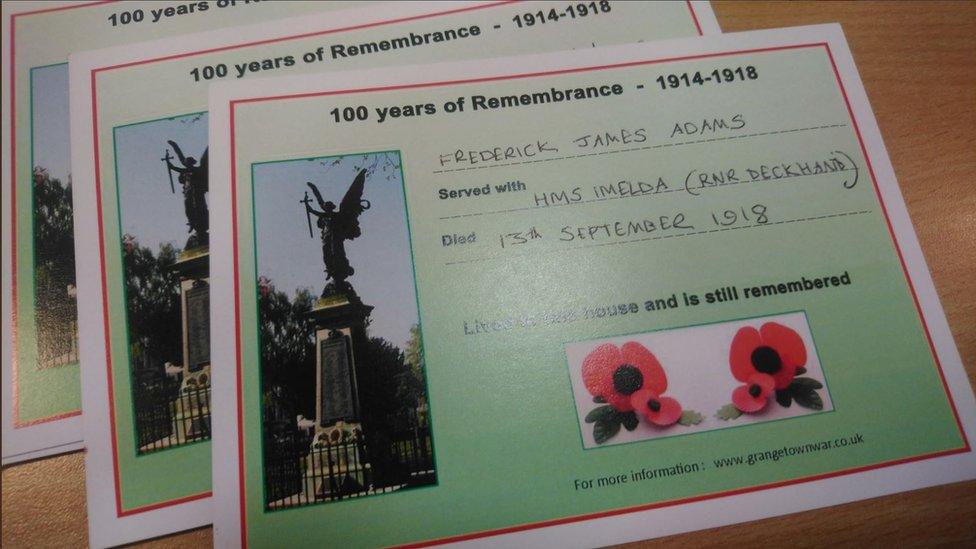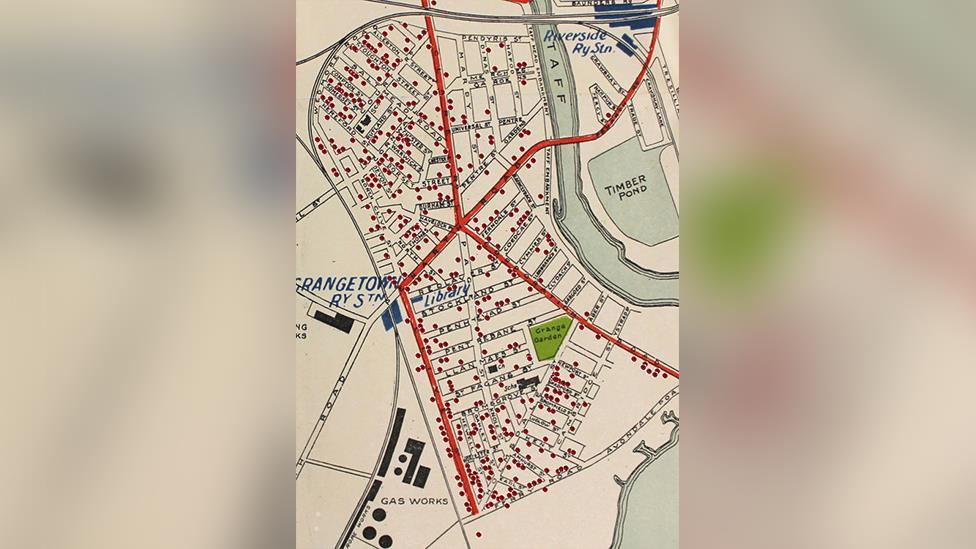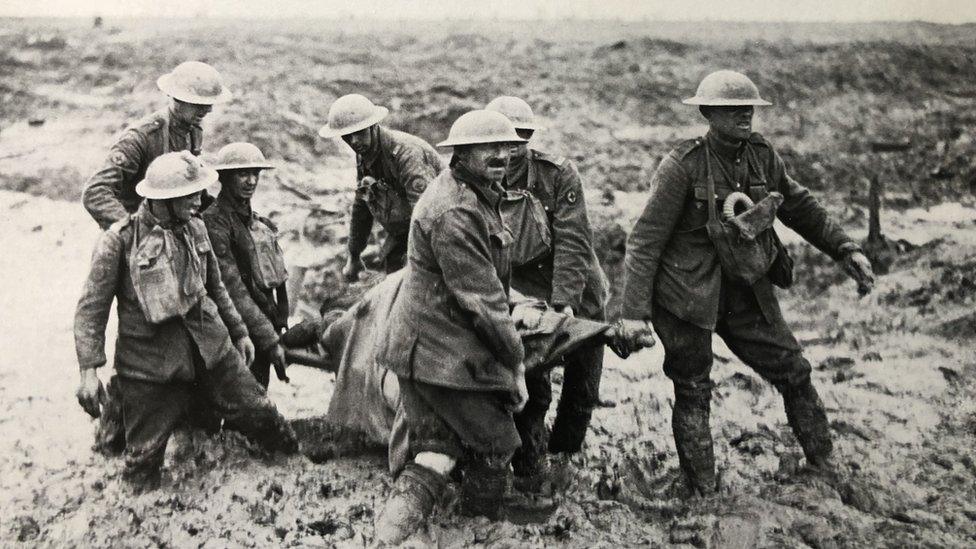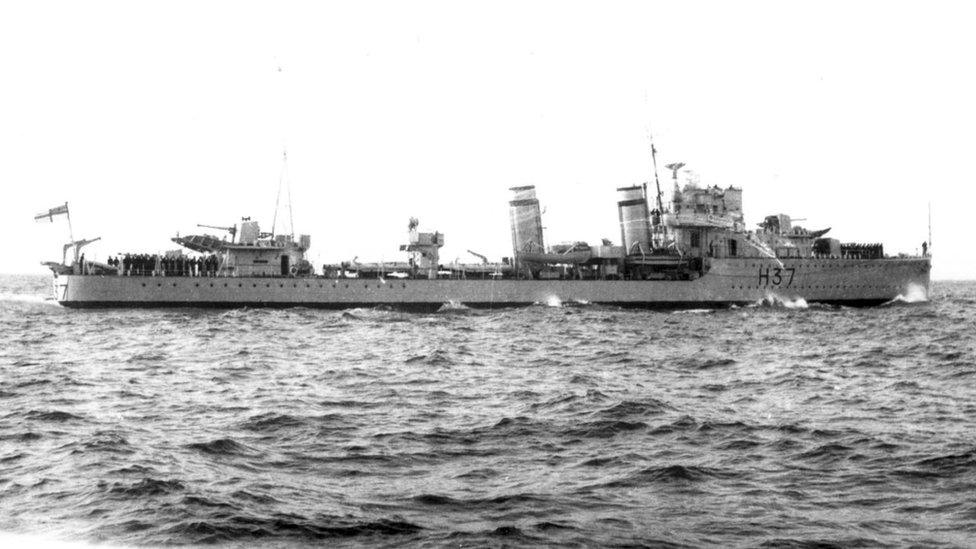World War One: Postcards to remember Grangetown soldiers
- Published

Gwyneth Jones said she was "proud" to be among the householders displaying the postcards
Real-life stories of soldiers who died in World War One have arrived on doorsteps in one part of Cardiff.
Grangetown Local History Society has sent postcards to the last known addresses of more than 400 men from the area who died in the conflict.
Householders are now displaying the cards in their windows ahead of the 100th anniversary of the end of the war, on Sunday.
The project took volunteers five years to research and bring to fruition.

"For every postcard there's a person behind it - a family, a mother, a father, a brother, a sister," historian Michelle Darby said
"It's a wonderful idea and the amount of research done in compiling more than just a list of names is truly impressive," said Clive Street resident Gwyneth Jones.
From that one street alone, 38 men died during World War One.
Her card refers to Robert Silvester Deans, a sailor who enlisted as a private in the Canadian Infantry. He died at the Somme aged 25.
Allow X content?
This article contains content provided by X. We ask for your permission before anything is loaded, as they may be using cookies and other technologies. You may want to read X’s cookie policy, external and privacy policy, external before accepting. To view this content choose ‘accept and continue’.

It is particularly poignant for Ms Jones given her grandfather served during World War One and both parents served during World War Two, while her 19-year-old son, Tomos enlisted with the Welsh Guards this month.
"It's lovely to think this brave soldier once lived in our house. No-one should ever forget the sacrifice they all made," she said.

The society's "poppy map" shows where all 480 soldiers from Grangetown who died in World War One once lived
The project began with research into the stories behind the 330 names engraved on the war memorial in Grange Gardens, erected in 1921.
However, it emerged that 153 more men and women from the area had also died but were never mentioned.

The Armistice 100 years on

Long read: The forgotten female soldier on the forgotten frontline
Video: War footage brought alive in colour
Interactive:, external What would you have done between 1914 and 1918?
Living history: Why 'indecent' Armistice Day parties ended

Local historian Michelle Darby said: "Time passes but we need to remember those who have died because of the sacrifice.
"So for every postcard there's a person behind it - a family, a mother, a father, a brother, a sister."

Grocer Martin Young showing postcards dedicated to the Francis brothers who died within six months of each other
Each card includes the name, regiment or ship and date of death of the soldier. People can then find out more about them by looking on the society's website, external.
Paul Shone, 47, of Ty Rosa Guest House, said the card has become a talking point for guests.
"It's really interesting to know a bit of the history of our house and good that we remember what was fought for," he said.
Cards are also being displayed in churches, chapels and schools closest to houses or streets that no longer exist while there remain a small number of casualties for which no details or address is known.
Ray Noyes, secretary of Grangetown Local History Society, said: "It's a special project that has taken some five years, and the total of over 500 is a high percentage for the small area.
"The response has been touching and many [householders] have been moved to know they now live where a WW1 'hero' once lived."
Allow X content?
This article contains content provided by X. We ask for your permission before anything is loaded, as they may be using cookies and other technologies. You may want to read X’s cookie policy, external and privacy policy, external before accepting. To view this content choose ‘accept and continue’.

- Published8 November 2018

- Published7 November 2018

- Published6 November 2018
